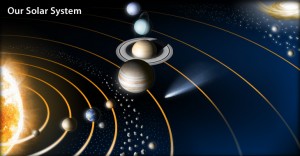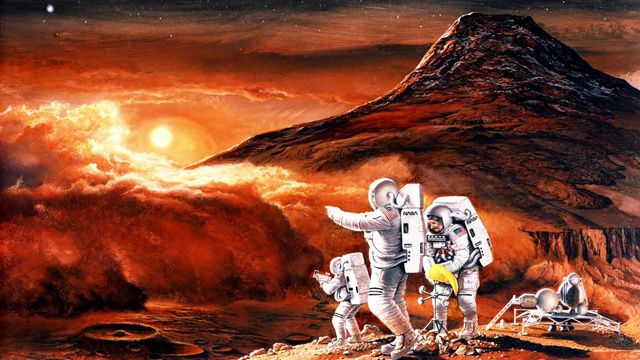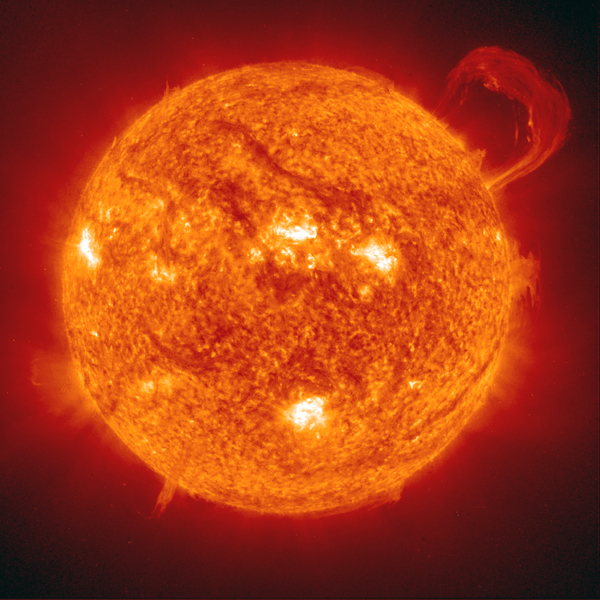The Solar System consists of the Sun and those celestial objects bound to it by gravity. These objects are the eight planets, their 166 known moons, five dwarf planets, and billions of small bodies. The small bodies include asteroids, icy Kuiper belt objects, comets, meteoroids, and interplanetary dust. The charted regions of the Solar System are the Sun, four terrestrial inner planets, the asteroid belt, four gas giant outer planets, the Kuiper belt. The Oort cloud exists at a distance roughly a thousand times beyond the region of Kuiper belt.
The Solar System is dominated by the Sun, a main sequence star that contains 99.86 per cent of the system’s known mass and dominates it gravitationally. Jupiter and Saturn, the Sun’s two largest orbiting bodies, account for more than 90 per cent of the system’s remaining mass. Most large objects in orbit around the Sun lie near the plane of Earth’s orbit, known as the ecliptic. The planets are very close to the ecliptic while
comets and Kuiper belt objects are usually at significantly greater angles to it. All of the planets and most other objects also orbit with the Sun’s rotation (counter-clockwise, as viewed from above the Sun’s North Pole). There are exceptions, such as Halley’s Comet.
Kepler’s laws of planetary motion describe the orbits of objects about the Sun. According to Kepler’s laws, each object travels along an ellipse with the Sun at one focus. Objects closer to the Sun (with smaller semi-major axes) have shorter years. On an elliptical orbit, a body’s distance from the Sun varies over the course of its year. A body’s closest approach to the Sun is called its perihelion, while it’s most distant point from the Sun is called its aphelion. Each body moves fastest at its perihelion and slowest at its aphelion. The orbits of the planets are nearly circular, but many comets, asteroids and Kuiper belt objects follow highly elliptical orbits. 
In reality, with a few exceptions, the farther a planet or belt is from the Sun, the larger the distance between it and the previous orbit. For example, Venus is approximately 0.33 astronomical units (AU) farther out than Mercury, while Saturn is 4.3 AU out from Jupiter, and Neptune lies 10.5 AU out from Uranus. Attempts have been made to determine a correlation between these orbital distances (like Titius-Bode law).
Most of the planets in the Solar System possess secondary systems of their own. Many are in turn orbited by planetary objects called natural satellites, or moons, some of which are larger than planets. Most of the largest natural satellites are in synchronous orbit, with one face permanently turned toward their parent. The four largest planets also possess planetary rings, thin bands of tiny particles that orbit them in unison.






